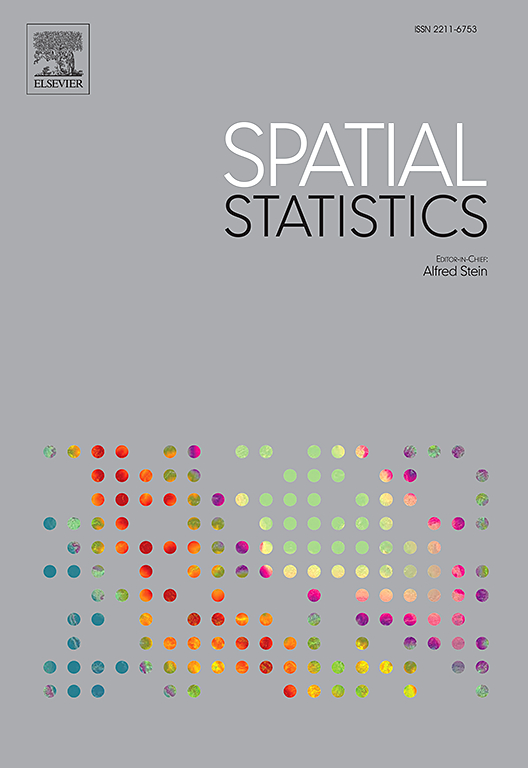极端数据的灵活时空模型
IF 2.5
2区 数学
Q3 GEOSCIENCES, MULTIDISCIPLINARY
引用次数: 0
摘要
极端值分析是研究罕见和极端事件的基本方法,在各个领域,特别是在环境科学的背景下,具有重要的意义。采用超出适当选择的高阈值的值的模型具有捕获数据的“次渐近”依赖性的优势。本文提出了一种将空间随机尺度混合模型扩展到时空域的方法。提供了表征极端事件在两个维度上的依赖结构的综合框架。事实上,通过使用参数推理,该模型能够在空间和时间上区分渐近依赖和独立。所提出模型的似然函数的高度复杂性需要基于神经网络进行参数估计的仿真方法,该方法利用数据中存在的次渐近依赖性的摘要。通过模拟研究和对降雨数据集的应用,证明了该模型在评估时空过程的极限依赖结构方面的有效性。本文章由计算机程序翻译,如有差异,请以英文原文为准。
Flexible space–time models for extreme data
Extreme value analysis is an essential methodology in the study of rare and extreme events, which hold significant interest in various fields, particularly in the context of environmental sciences. Models that employ the exceedances of values above suitably selected high thresholds possess the advantage of capturing the “sub-asymptotic” dependence of data. This paper presents an extension of spatial random scale mixture models to the spatio-temporal domain. A comprehensive framework for characterizing the dependence structure of extreme events across both dimensions is provided. Indeed, the model is capable of distinguishing between asymptotic dependence and independence, both in space and time, through the use of parametric inference. The high complexity of the likelihood function for the proposed model necessitates a simulation approach based on neural networks for parameter estimation, which leverages summaries of the sub-asymptotic dependence present in the data. The effectiveness of the model in assessing the limiting dependence structure of spatio-temporal processes is demonstrated through both simulation studies and an application to rainfall datasets.
求助全文
通过发布文献求助,成功后即可免费获取论文全文。
去求助
来源期刊

Spatial Statistics
GEOSCIENCES, MULTIDISCIPLINARY-MATHEMATICS, INTERDISCIPLINARY APPLICATIONS
CiteScore
4.00
自引率
21.70%
发文量
89
审稿时长
55 days
期刊介绍:
Spatial Statistics publishes articles on the theory and application of spatial and spatio-temporal statistics. It favours manuscripts that present theory generated by new applications, or in which new theory is applied to an important practical case. A purely theoretical study will only rarely be accepted. Pure case studies without methodological development are not acceptable for publication.
Spatial statistics concerns the quantitative analysis of spatial and spatio-temporal data, including their statistical dependencies, accuracy and uncertainties. Methodology for spatial statistics is typically found in probability theory, stochastic modelling and mathematical statistics as well as in information science. Spatial statistics is used in mapping, assessing spatial data quality, sampling design optimisation, modelling of dependence structures, and drawing of valid inference from a limited set of spatio-temporal data.
 求助内容:
求助内容: 应助结果提醒方式:
应助结果提醒方式:


